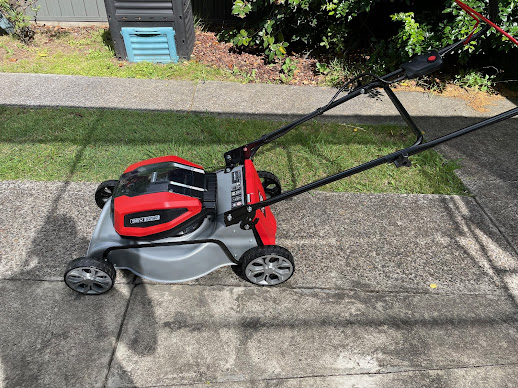I don’t know what else to call it.
So the story goes, this object – well, six of them supposedly – were found buried under a USAF base.
Maybe it was some secret device that didn’t work out.
Here are the two pictures of it supplied:
This is one of them dug up, showing its huge size.
It also has some stubby cylinders coming out of odd places.
The comb- like protrusions are also mysterious.
This picture seems to show one of these objects in a frame suitable to move it – and it actually does not seem to be solid as the frame would need to be much stronger if it were.
. . . . . . or am I wrong on that count?
This thingy puzzled me because it does not seem to have a logical purpose.
Regardless of that, I made a rough simulation of it in Blender to see how it went together.
Next up is two pics of my Blender model minus the comb bits as they don’t seem to have any function other than maybe strengthening.
It looks like two double saddle shapes connected by four supports.
The model shows the supports in blue for clarity.
At first it did not look symmetrical: It seemed untidy . . . . . .. but then when carefully observed, the two large diameter semicircles seem to centre up. I made some axial cylinders to show that in the second image of my re- creation.
There are two basic possibilities for the structure of the object:
1. A solid metal casting – but then why make it so huge and on top of that, what are the large tubular fittings on it? Unless . . . . it was cast and not ever finished, and those are the risers, the tubes in the mould where the molten metal flows into the mould.
That could suggest it was something like the mounting for a big satellite dish . . . . . except that it does not make sense as to why it would be buried and not simply melted down to reuse the metal.
And this has other problems: where the axes should be is not solid, and you would need solid fixings for the axles if it was made for that, with bearing seats too.
Yes, it might just be two cast saddles but then why cast two at once? These things are huge and casting one alone would be a very big job. Two at once would double your problems and increase the chance of failure.
2. A hollow object – this looks more likely to me – perhaps a cooling chamber with coils or other tubing inside that needed to be cooled, which would explain the large tube fittings – for the coolant pipes. Still mysterious and weird. A superconducting double coil of some sort?
It seems to have two main axes but not a third.
It may actually not be as centred as my model either – but it is hard to tell.
This is very strange. Even if it was radioactive you still would not bury it under an Airforce base.
If it does not have a use, why bury it? Does it have strange effects on people? Even more reason not to bury it under anything you want to use . . . . well, that’s what I thought. I guess under an Airforce base it should not get dug up any time soon . . . . . . . except when it does. Weird.
If I imagine it is some sort of Lorentz/MHD device then the three red axes could be tubes and the coils would then create . . . . . ummmm. Two pairs of them have flat coils passing them in parallel axes but the third pair (left- right in the picture) are at 90 degrees to each other.
Well, there it is.
According to some, it was some sort of helium-3 device . . . . . . . but I have serious doubts about helium-3 being anything useful at all.
Have you heard tales of “mining helium-3 on the moon”?
All of the talk of using it in fusion reactors is so far nothing but talk: nobody has ever managed to get nuclear fusion power to work in the sense of generating as much power as it consumes or more - and that is despite billions of dollars and many attempts.
Will He-3 make a difference here? I suspect not since I think the whole idea of bottled fusion on Earth is not going to work: our science is just not good enough and we are somehow missing a big part of what makes solar fusion happen – but that’s just my opinion, and I don’t need funding for my research.
So this idea is . . . . . go to the moon, mine it for Helium-3, then bring the helium3 back to earth and then use it to generate fusion power in a reactor that may or may not work.
Just the idea of mining the moon alone is going to be sooo expensive in terms of energy and money (assuming of course that it can be mined there), the helium-3 that we got from this operation would be worth a lot more than gold per gram . . . . . . and it’s helium so a gram is going to be in a gas bottle . . . . and then you want to try it in a fusion reactor that has yet to be proven as viable for power generation on Earth . . .
Yeah right.










